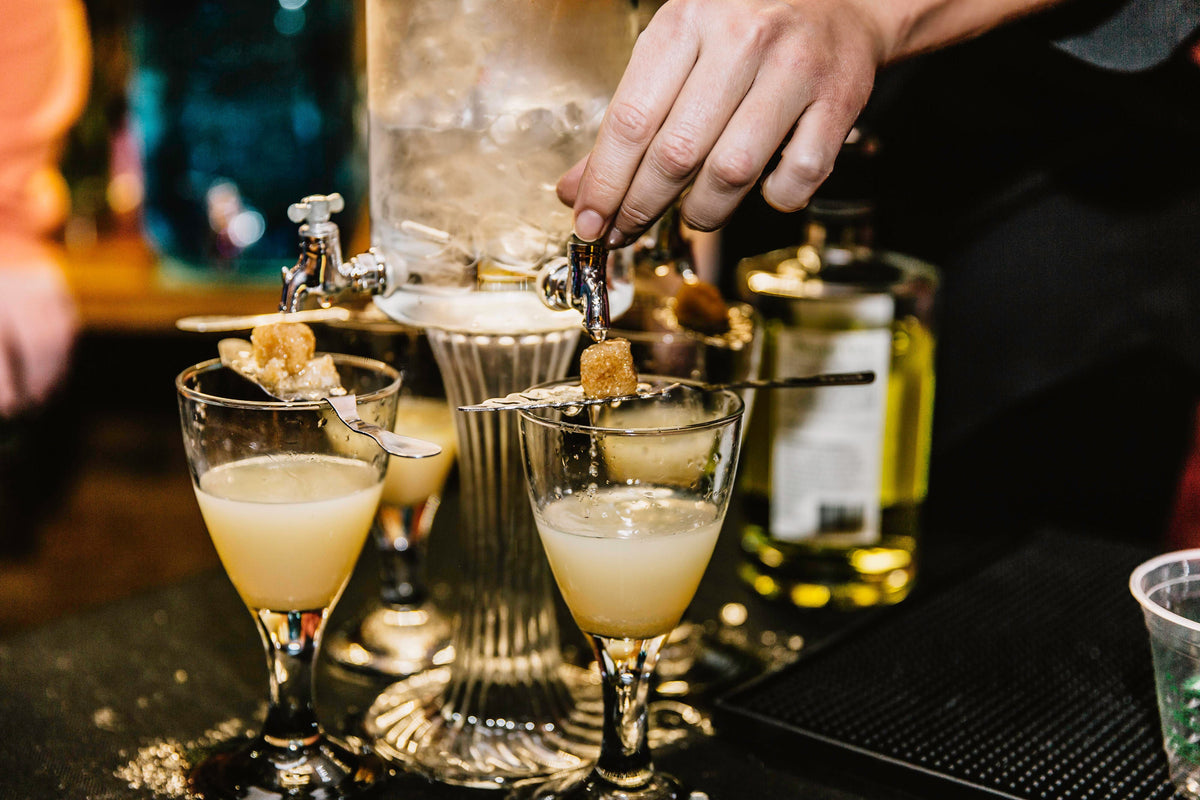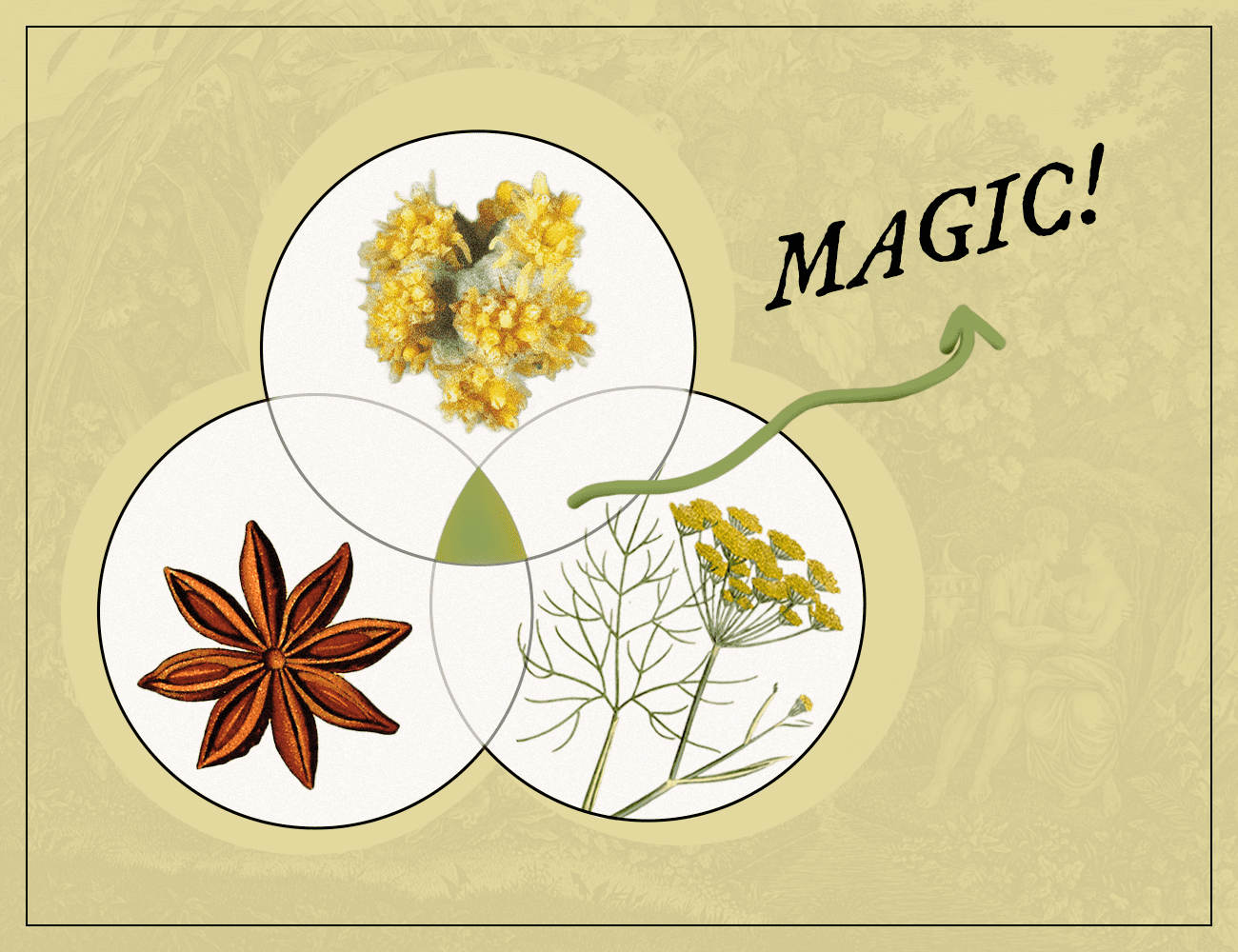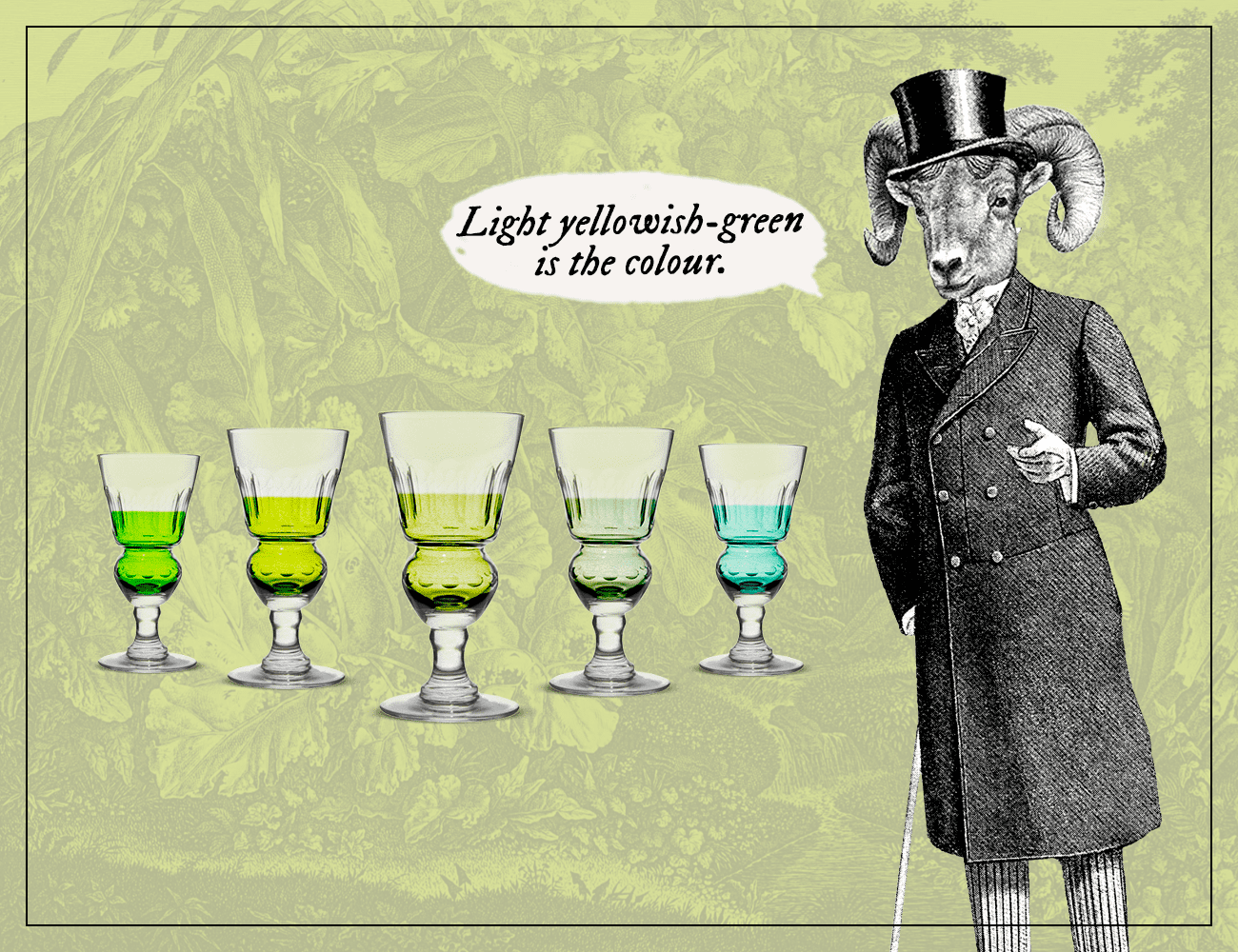
Absinthe 101
|
|
Time to read 4 min
|
|
Time to read 4 min
One of the Spirit world’s most elusive comrades: Absinthe. Whispered about for most of the 20th Century, smuggled between friends and slunk in darkened corners in the room, this is the Spirit that has the ability to confuse and delight in equal measure.
Absinthe has an incredible allure and backstory. So what is it? Well, it is an alcoholic liqueur made primarily from wormwood, anise, and fennel. Its taste is described as licorice or aniseed, it can be very strong and has a strong herbal smell.
Those are the primary ingredients: wormwood, anise, and fennel.
They are macerated in alcohol (ethanol) much in the same way that juniper is macerated in alcohol to make Gin. The resulting liqueur, Absinthe, is very strong with a 70% proof point.
Absinthe’s natural color is a light yellowish-green or brownish-green. The great thing about the color of Absinthe is it can be a decent indicator of quality.
This natural pale color comes from the herbs such as fennel, anise, and Wormwood that are saturated in the distilling process. If you come across any luminous green and strong blue-green Absinthes then turn the other way!
Anything that looks too artificial will be, these brighter hues are only achieved when color is added to the Absinthe.
No, thankfully it is not! In the nineteenth century, it was banned because it was believed to be hallucinogenic and started to be associated with violence and criminal activities.
Scientists have confirmed that it is safe to drink, and after being banned in both the US and Europe, it is legal to drink in both places again.
Most people will tell you that Absinthe has a chequered past, no matter where in the world they are from.
If you ask them why or what the story is, the majority would struggle to tell you the ins and outs. In a nutshell, it was extremely popular at the end of the 1800s particularly in Europe and in Paris before it all went downhill at the turn of the century.
From 1910 onwards country after the country banned the Spirit because of its bad reputation and as a culture of fear blossomed around it having ‘mind-altering effects.
These were later disproved and people began to enjoy Absinthe after a century-long ban. There’s a lot more to the tale, which you can read all about in our history of Absinthe piece.
There are so many cocktails to try - classics that you can tweak effortlessly if you’re looking for more of a gateway cocktail to start out with.
Then there are some real vintage drinks like Death in the Afternoon and the Sazerac, which are absolute musts to taste.
Trust me, this is where you should start. A Pina Colada really sets the tone for an evening out with friends, and the same can be said for the Absinthe Colada.
Measure 30ml of pineapple juice and mix with 20ml of both Absinthe and coconut syrup. Shake well and then add 15 ml of a good spiced rum and lemon juice and shake again.
Simple and very very effective. Mix Absinthe with lime juice sugar syrup and then top up with ginger beer. It really couldn’t be easier than that.
Taste and adjust the measurements as you like but start with 25ml of absinthe, 15ml of lime juice, then 5ml of sugar syrup, and then 30ml of ginger beer.
For a refreshing Mojito, Absinthe can also have your back. Take a good handful of mint leaves, 20ml of Absinthe, and 25ml of lime juice and pour into your cocktail shaker.
Add 20ml of any sugar syrup, honey syrup made of equal parts honey and water works really really well. Give it a good stir, top with soda water, and enjoy! If you don’t have a cocktail shaker just give the mint leaves a good mash and stir in your glass or jug before mixing with the rest of the ingredients.
Garnish with mint and lime-like you would a regular Mojito!
A wonderful cocktail, created by the author Ernest Hemingway and incredibly easy to make. You would be hard-pressed to find a drink that is quicker to fix.
Get a cold champagne glass ready, pour in 10ml of Absinthe, 5ml of your chosen sugar syrup, and then fill to the top with champagne.
Soak one sugar cube in three or four dashes of Peychaud’s bitters and then crush in the glass. Pour in 45ml of Rye Whiskey.
Then take a separate glass that has been chilled and swirl in 8ml (about 2 tsp) of Absinthe so that it coats all sides of the glass. Pour your mix of Whiskey, bitters, and sugar into the cold Absinthe glass.
Knowing all that, we’d encourage you to try Absinthe. There is a cocktail for everyone - whether it is one of the oldest cocktails around or a classic that will gradually introduce you to the unique notes of Absinthe.
What is your perception of Absinthe? Comment on this article and let us know whether you are a fan or a foe!



